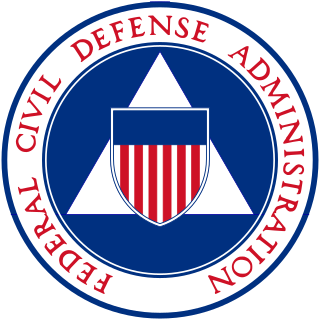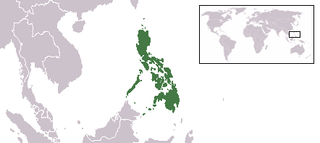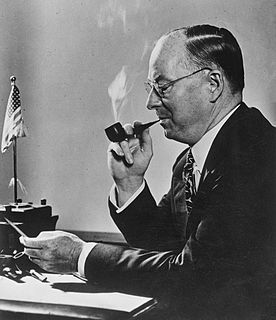Related Research Articles

In the United States, an executive order is a directive by the president of the United States that manages operations of the federal government. The legal or constitutional basis for executive orders has multiple sources. Article Two of the United States Constitution gives presidents broad executive and enforcement authority to use their discretion to determine how to enforce the law or to otherwise manage the resources and staff of the executive branch. The ability to make such orders is also based on expressed or implied Acts of Congress that delegate to the president some degree of discretionary power. The vast majority of executive orders are proposed by federal agencies before being issued by the president.
The Government of Croatia, formally the Government of the Republic of Croatia, commonly abbreviated to Croatian Government, is the main executive branch of government in Croatia. It is led by the president of the Government, informally abbreviated to premier or prime minister. The prime minister is nominated by the president of the Republic from among those candidates who enjoy majority support in the Croatian Parliament; the candidate is then chosen by the Parliament. There are 20 other government members, serving as deputy prime ministers, government ministers or both; they are chosen by the prime minister and confirmed by the Parliament (Sabor). The Government of the Republic of Croatia exercises its executive powers in conformity with the Croatian Constitution and legislation enacted by the Croatian Parliament. The current government is led by Prime Minister Andrej Plenković.
The United States maintained its Constitutional Republic government structure throughout World War II. Certain expediencies were taken within the existing structure of the Federal government, such as conscription and other violations of civil liberties, and the internment and later dispersal of Japanese-Americans. Still, elections were held as scheduled in 1944.

The United States Office of War Information (OWI) was a United States government agency created during World War II. The OWI operated from June 1942 until September 1945. Through radio broadcasts, newspapers, posters, photographs, films and other forms of media, the OWI was the connection between the battlefront and civilian communities. The office also established several overseas branches, which launched a large-scale information and propaganda campaign abroad. From 1942 to 1945, the OWI revised or discarded any film scripts reviewed by them that portrayed the United States in a negative light, including anti-war material.

The War Shipping Administration (WSA) was a World War II emergency war agency of the US government, tasked to purchase and operate the civilian shipping tonnage the United States needed for fighting the war. Both shipbuilding under the Maritime Commission and ship allocation under the WSA to Army, Navy or civilian needs were closely coordinated though Vice Admiral Emory S. Land who continued as head of the Maritime Commission while also heading the WSA.

The War Production Board (WPB) was an agency of the United States government that supervised war production during World War II. President Franklin D. Roosevelt established it in January 1942, with Executive Order 9024. The WPB replaced the Supply Priorities and Allocations Board and the Office of Production Management.

The Federal Civil Defense Administration (FCDA) was organized by President Harry S. Truman on December 1, 1950, through Executive Order 10186, and became an official government agency via the Federal Civil Defense Act of 1950 on 12 January 1951. In 1958 the FCDA was superseded by the Office of Civil and Defense Mobilization when President Dwight D. Eisenhower merged the FCDA with the Office of Defense Mobilization.
In the administration of Franklin Delano Roosevelt, the Foreign Economic Administration (FEA) was formed to relieve friction between US agencies operating abroad on September 25, 1943.

The Office of the Coordinator of Inter-American Affairs, later known as the Office for Inter-American Affairs, was a United States agency promoting inter-American cooperation (Pan-Americanism) during the 1940s, especially in commercial and economic areas. It was started in August 1940 as OCCCRBAR with Nelson Rockefeller as its head, appointed by President Franklin Delano Roosevelt.

The War Manpower Commission was a World War II agency of the United States Government charged with planning to balance the labor needs of agriculture, industry and the armed forces.

The Office of Censorship was an emergency wartime agency set up by the United States federal government on December 19, 1941 to aid in the censorship of all communications coming into and going out of the United States, including its territories and the Philippines. The efforts of the Office of Censorship to balance the protection of sensitive war related information with the constitutional freedoms of the press is considered largely successful.

The Office of Civil Defense (OCD) was an agency of the United States Department of Defense from 1961–64. It replaced the Office of Civil and Defense Mobilization. The organization was renamed the Defense Civil Preparedness Agency on May 5, 1972, and was abolished on July 20, 1979, pursuant to Executive Order 12148. Its duties were given to the Federal Emergency Management Agency (FEMA).

The Philippine Executive Commission was a provisional government set up to govern the Philippine archipelago during World War II. It was established with sanction from the occupying Imperial Japanese forces as an interim governing body prior to the establishment of the Japanese-sponsored and nominally independent, Second Philippine Republic.

The Second Philippine Republic, officially known as the Republic of the Philippines and also known as the Japanese-sponsored Philippine Republic, was a Japanese puppet state established on October 14, 1943 during the Japanese occupation of the islands.
The Office of Defense Mobilization (ODM) was an independent agency of the United States government whose function was to plan, coordinate, direct and control all wartime mobilization activities of the federal government, including manpower, economic stabilization, and transport operations. It was established in 1950, and for three years was one of the most powerful agencies in the federal government. It merged with other agencies in 1958 to become the Office of Civil and Defense Mobilization (1958–1961).
The War Assets Administration (WAA) was created to dispose of United States government-owned surplus material and property from World War II. The WAA was established in the Office for Emergency Management, effective March 25, 1946, by Executive Order 9689, January 31, 1946. It was headed by Robert McGowan Littlejohn.

Donald Marr Nelson (1888–1959) was an American business executive and public servant, serving as the executive vice president of Sears Roebuck before accepting the position of director of priorities of the United States Office of Production Management (1941–1942). In 1942 Nelson became chairman of the War Production Board (1942–1944) when it replaced the OPM. He later served for two years (1945–1947) as president of the Society of Independent Motion Picture Producers.

The War Powers Act of 1941, also known as the First War Powers Act, was an American emergency law that increased Federal power during World War II. The act was signed by U.S. President Franklin D. Roosevelt and put into law on December 18, 1941, less than two weeks after the Japanese attack on Pearl Harbor. The act was similar to the Departmental Reorganization Act of 1917 as it was signed shortly before the U.S. engaged in a large war and increased the powers of the president's U.S. Executive Branch.
The Fair Employment Practice Committee (FEPC) was created in 1941 in the United States to implement Executive Order 8802 by President Franklin D. Roosevelt "banning discriminatory employment practices by Federal agencies and all unions and companies engaged in war-related work." That was shortly before the United States entered World War II. The executive order also required federal vocational and training programs to be administered without discrimination. Established in the Office of Production Management, the FEPC was intended to help African Americans and other minorities obtain jobs in home front industries during World War II. In practice, especially in its later years, the committee also tried to open up more skilled jobs in industry to minorities, who had often been restricted to lowest-level work. The FEPC appeared to have contributed to substantial economic improvements among black men during the 1940s by helping them gain entry to more skilled and higher-paying positions in defense-related industries.
The Combined Production and Resources Board was a temporary World War II government agency that allocated the combined economic resources of the United States and Britain. It was set up by President Franklin D. Roosevelt and Prime Minister Winston Churchill on June 9, 1942. Canada, after insisting on its economic importance, was given a place on the board in November, 1942. The Board closed down at the end of December 1945.
References
- ↑ Peters, Gerhard; Woolley, John T. "Franklin D. Roosevelt: "Executive Order 9347 Establishing the Office of War Mobilization.," May 27, 1943". The American Presidency Project. University of California - Santa Barbara.